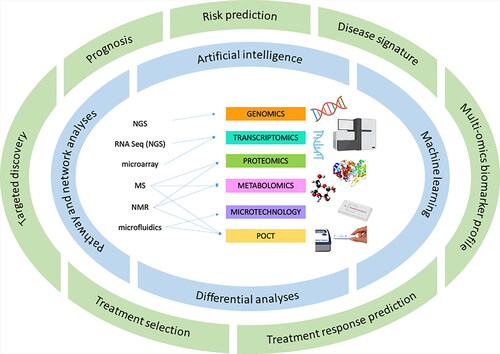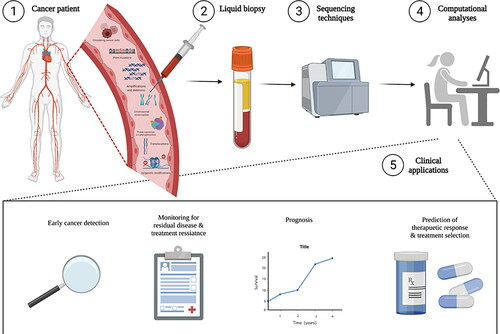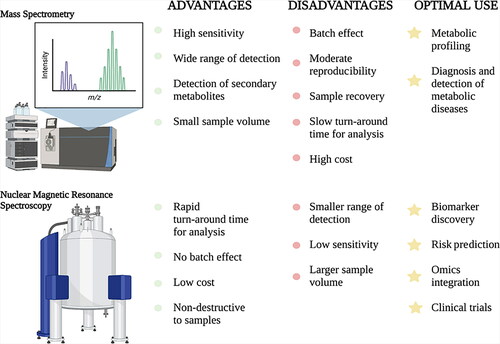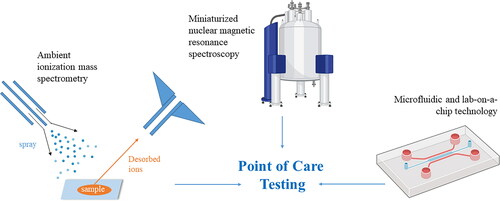Figures & data
Figure 1. Laboratory medicine is defined by advanced analytical innovations, and the promise of precision and personalized medicine is found at the intersection of the data derived from these novel techniques and the computational analyses required to derive clinical meaning. In amalgamating the extensive data derived from advanced sample analytics, sophisticated information technology may facilitate a new, patient-centered, era of laboratory medicine.

Figure 2. Laboratory methods and clinical applications of liquid biopsy in cancer screening, monitoring, therapeutic prediction, and treatment selection. From a liquid biopsy (i.e. blood sample), circulating tumour cells, point mutations, amplifications and deletions, chromosomal abnormalities, protein expression and phosphorylation, translocations, and epigenetic modifications can be detected using a variety of genetic sequencing technologies. Followed with sophisticated computational analyses, this novel laboratory technique can be used in early cancer detection, disease monitoring, prognosis, predicting response to therapy, and providing personalized drug selection.

Data availability statement
Data sharing is not applicable to this article as no new data were created or analyzed in this study.


